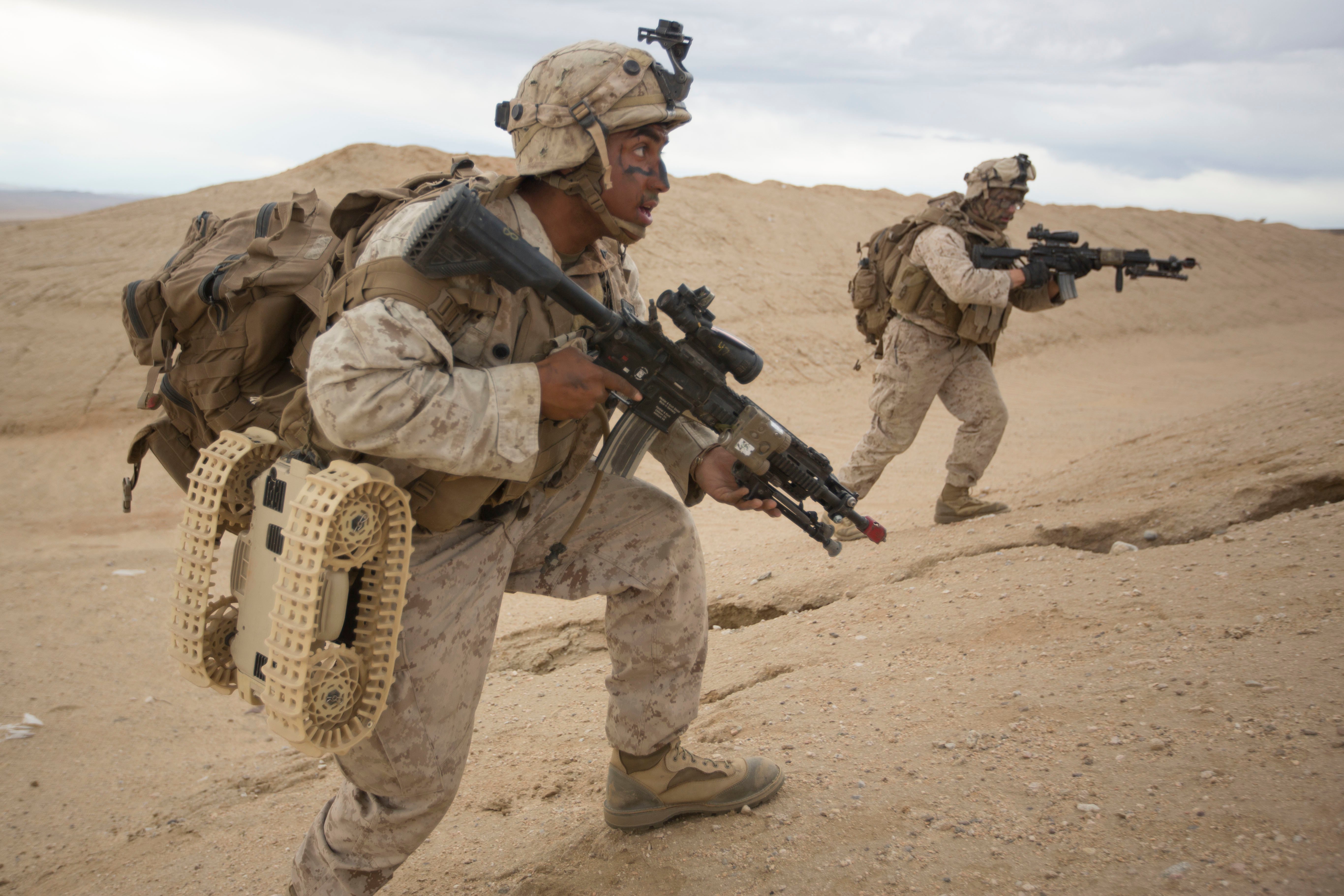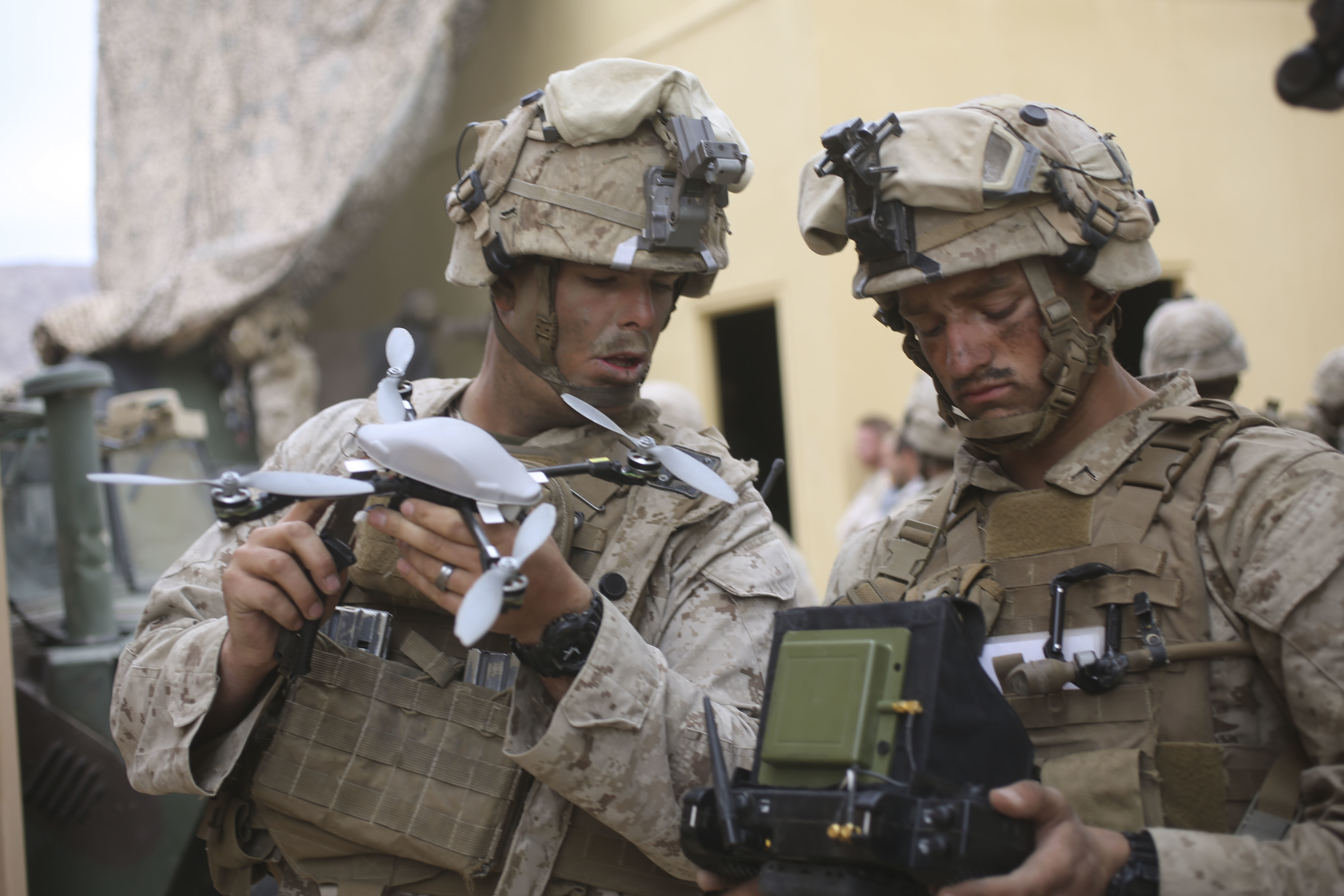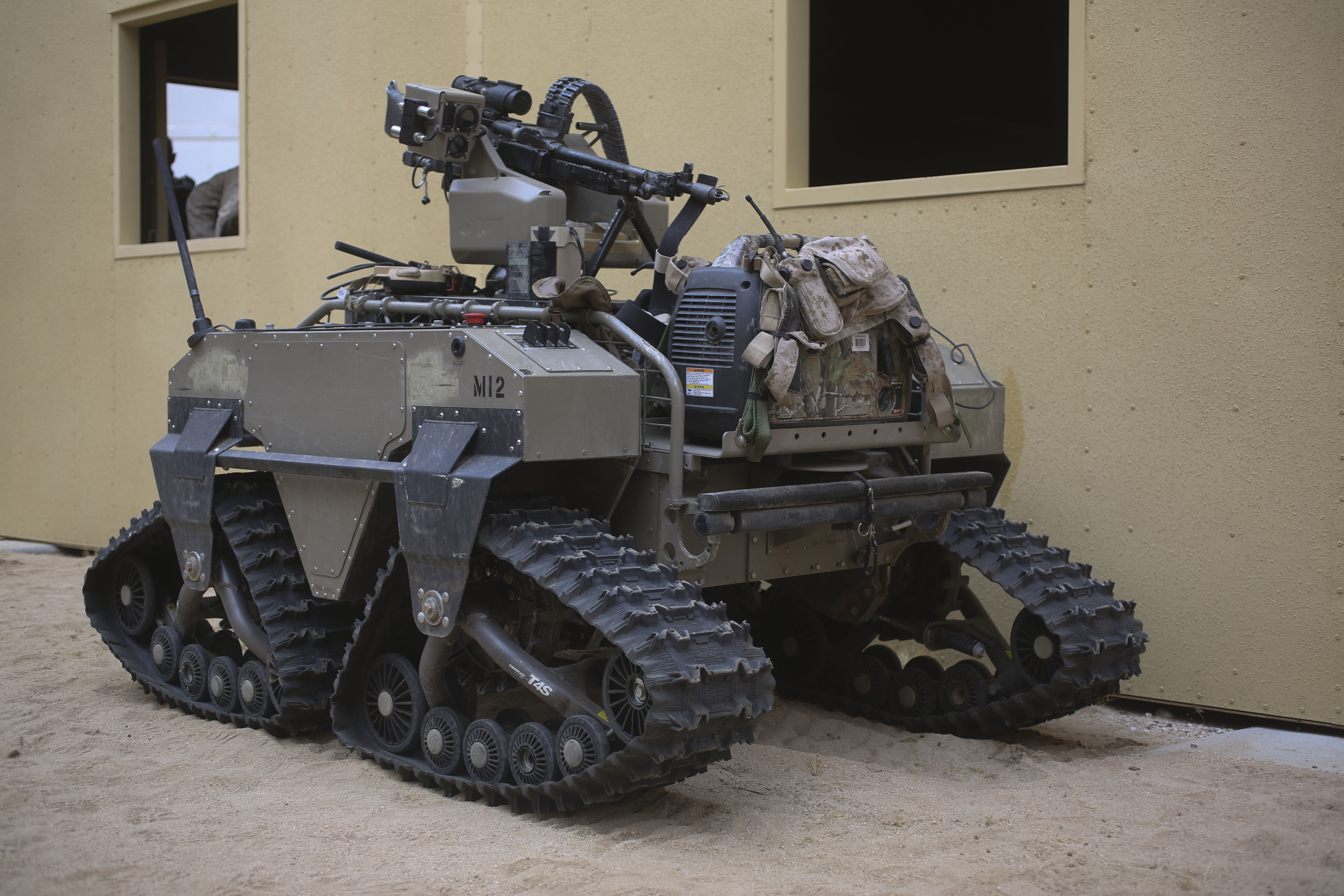
SAN DIEGO, Calif. – The Marine Corps’ infantry battalion designated as the service’s experimental force is gearing up for a final evaluation before it deploys to Japan, Commandant of the Marine Corps Gen. Robert Neller said Thursday.
The battalion – 3rd Battalion, 5th Marines, from Camp Pendleton – is preparing to join the 31st Marine Expeditionary Unit in Okinawa this spring as its ground combat element for a scheduled unit deployment rotation to the region as part of Japan-based III Marine Expeditionary Force.
“They are getting ready to go through their final evaluation before they deploy to Okinawa and be part of the unit there,” Neller said, speaking with reporters after a luncheon “town hall” session at the WEST 2017 conference.
Last summer, the Marine Corps equipped 3/5 with high-tech equipment and semi-autonomous systems including small drones, robotic vehicles, off-road vehicles, “smart” digital tablets, wearable batteries and energy-generating gear.
At last year’s WEST 2016 conference, Neller announced that 3/5 – a highly-decorated, ground combat unit nicknamed “Darkhorse” – would serve as the Marine Corps’ experimental unit. That designation would carry the infantry battalion through about an 18-month hitch as a test-bed of sorts for various new technologies, gear and concepts to help modernize the force.
Neller visited with 3/5 last summer when the Marines and sailors went to the desert at Marine Corps Air-Ground Combat Center in Twentynine Palms, Calif., for a series of exercises and experiments conducted by the Marine Corps Warfighting Laboratory. The Quantico, Va.-based lab is leading the effort to test and evaluate several dozen systems and concepts, which include some commercial off-the-shelf systems and surrogate technologies.
“We have decided what they are going to take with them and what they are going to have,” Neller said.

Along with determining changes to how the future infantry battalion should best be equipped, the Marine Corps is taking a hard look at potential changes to an infantry battalion’s personnel manning and structure. Small units in the future fight must be ready to operate and fight in dispersed operations and in a more and highly-digitized battlespace than in a traditional, conventional war, officials have said.
So the Marine Corps will examine several table-of-organization arrangements of 3/5’s companies, platoons and squads, which have differently-sized fire teams – which are the infantry’s backbone and most-basic unit. “They are operating in three different squad and platoon organizations in each company, and we are going to use that to figure out which one might be most optimal,” Neller said.
The warfighting lab has kept him updated on 3/5’s progress, albeit with something of a hands-off approach as the battalion has stayed busy with unit-level training and predeployment exercises since summer. The battalion participated in 1st Marine Division’s exercises Steel Knight and Seahorse Wind in December, the Integrated Training Exercise at Twentynine Palms in November, a battalion-level final exercise in September and, in late July and August, MCWL’s Marine Air Ground Task Force Integrated Exercise and the Southern California portion of the Rim-of-the-Pacific exercise.
“So we continue to track it,” Neller said. “At the same time, they are going to deploy, so we know they need to be left to their own device to get ready to go.”

It’s too early to know what new tech or gear, and which unit T/O, the Marine Corps will settle on for its Force 2025 infantry battalion. Those decisions could hinge on the current budget and political environment, as well as the possible growth to a force of 185,000 Marines.
“Some of the stuff, I think, we’ll export,” Neller said. “A lot of it depends on what happens with the budget and the resources, and if we get enough money to as directed in the NDAA to increase the Marine Corps by 3,000, we have to have appropriations to do that. That’s kind of a decision point as to what we do with the rest of the force and how we adjust it.”
“We are kind of at a point now where we just try to iterate this thing. We will learn, succeed, fail or whatever, and then adjust,” he added. “When they get back from deployment, we’ll say, OK, here’s what we learned, and do we want to apply this to everybody?”





